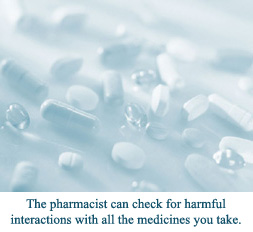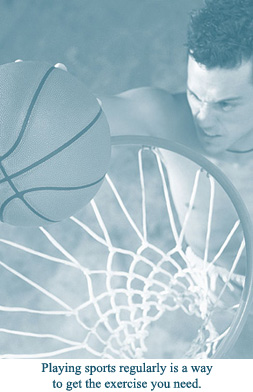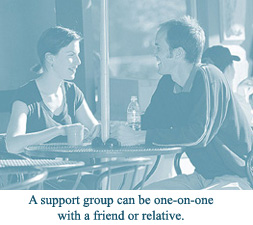Drug Dependence
Drug dependence and abuse both involve the misuse of one or more drugs. These can be prescription medicines and/or illicit drugs.
Drug dependence is addiction. A person keeps using a drug even though doing so results in problems that affect the person’s mind, physical health and/or behaviors. Problems include:
|
|
Cravings for the drug |
|
|
Need for increased amounts of the drug to get the desired effect |
|
|
Withdrawal symptoms |
Drug abuse is the repeated use of a drug that results in distress and daily living problems.
|
|
Failure to fulfill work, school or home obligations |
|
|
Legal problems, such as getting arrested for disorderly conduct |
|
|
Financial problems due to the cost of drugs |
|
|
Physical harm that results from things, such as a car accident |
|
|
Relationship problems, such as arguments or physical fights |
A person can abuse a drug without becoming addicted to it. Addicts, however, usually have distress and the daily problems that result from drug abuse.
Drug Facts Chart
| Type of Drug | Examples/Common Names | Possible Effects | Dangers of Use/Abuse | Withdrawal Symptoms | Signs of Overdose |
| Cocaine | Blow, crack, crank, “C”, coke, nose candy, rock, white girl | Increased alertness and energy, euphoria (followed by depression), increased pulse rate and blood pressure, decreased appetite, insomnia, irritability | Severe depression, convulsions, heart attack, lung damage, coma, brain damage, risk of infection from using contaminated needles, death | Extreme depression, intense anxiety, irritability, shakiness, fatigue, insomnia, sleeping too much, vivid, complicated dreams | Agitation, convulsions, elevation in body temperature, hallucinations, possible death |
| Depressants | Alcohol, barbiturates, sedatives, tranquilizers, downers, ludes, reds, yellow jackets | Drowsiness, slurred speech, drunkenness, memory loss, sudden mood shifts, depression, lack of coordination | Overdose, especially when used with alcohol, rigid muscles and even death | Tremors of hands and face, insomnia, nausea, vomiting, rapid heart rate, elevated blood pressure, weight loss, anxiety, seizures, delirium, death | Shallow breathing, dilated pupils, clammy skin, weak and rapid pulse, coma, death |
| Hallucinogens | Acid, LSD, PCP (angel dust), mescaline, designer drugs: DMT, MDA, STP, MMDA, MDMA, ecstasy, peyote | Alter mood and perception of time and space, delusions, hallucinations. Can “see sounds” and “hear colors”. Rapid mood swings. Feelings of loss of control, helplessness, panic. Elevation in body temperature, heartbeat and breathing. Blurred vision, tremors, lack of coordination | Brain damage, behavior can be unpredictable, unstable (violent with PCP). Can have flashbacks and re-experience symptoms of past hallucinogen use even though not taking the drug at the present time. This can cause distress or impair normal functioning | No physical withdrawal symptoms. Psychological withdrawal symptoms: mood swings, anxiety, depression, insomnia, flashback episode of previous use: feels like you are on the drug when you are not | Psychosis (unconsciousness, seizure, coma, possible with PCP) |
| Inhalants | Solvents such as glue, paint thinner, gasoline, kerosene, lighter fluid, nail polish remover; aerosols, such as hair sprays, vegetable cooking sprays; anesthetics, such as ether, chloroform, nitrous oxide (laughing gas), spray paints, especially gold and silver. Note: These are known as inhalants when the vapors from them are used for the purpose of getting high | Slow heart rate, breathing and brain activity. Headaches, dizziness, nausea, lack of coordination, slurred speech, blurred vision. Euphoria, increased energy, blood shot eyes, nosebleed, hallucinations | Suffocation, heart failure, unconsciousness, seizures, brain damage, possible death | Chills, headaches, stomachaches, delirium, hallucinations | Unconsciousness, seizures, possible death |
| Marijuana (from the cannabis class of drugs) | Pot, grass, reefer, bud, herb, jay, joint, a Fatty, smoke, weed and AMP (marijuana mixed with formaldehyde) | Euphoria, relaxes inhibitions, increases appetite, dry mouth | Feelings of panic, impaired short term memory, decreased ability to concentrate | In heavy users: nausea, anxiety, irritability, insomnia | Fatigue, paranoia, possible psychosis |
| Narcotics | Heroin (dope, horse, goods, smack, brown sugar, school boy), codeine (also in prescription medicine, such as Tylenol with codeine), Robitussin A-C, opium (Dovers powder, paregoric), morphine, methadone, Darvon, Percodan, Demerol | Slowed breathing, heart rate and brain activity. Increase in the body’s tolerance to pain. Constipation, euphoria, relaxation, sense of peace. Impaired memory and/or attention span, slurred speech | Lethargy, weight loss. Risk of infection (hepatitis, AIDS) from using contaminated needles. Impaired judgement in social and/or work functioning | Watery eyes, runny nose, yawning. Anxiety, irritability, panic, tremors, insomnia. Chills and sweating, nausea or vomiting, diarrhea, muscle aches | Slow, shallow breathing, clammy skin. Convulsions, coma, possible death |
| Stimulants | Speed, uppers, crank, amphetamines | Increased alertness, blood pressure, pulse rate. Elevates mood | Fatigue, confusion, aggressiveness, severe anxiety, appetite and/or weight loss | Apathy, long periods of sleep, depression, irritability, disorientation | Agitation, increase in body temperature. Hallucinations, convulsions, possible death |
Treatment
Using drugs can cause physical and emotional problems. Drug use and abuse affects the users, their families, friends and co-workers. It is also costly, not only to the drug abusers and their families, but to their employers as well. If you are drug dependent or abusing drugs, get help. You can get help through:
|
|
Your doctor |
|
|
Your Employee Assistance Program (EAP) |
|
|
Your Student Counseling Center |
|
|
A drug treatment clinic |
|
|
A mental health center or provider |
|
|
Self-help groups such as Narcotics Anonymous (NA) |
The treatment for drug dependence and abuse varies and depends on the drug(s) being used and the person’s needs. Types of treatment include:
|
|
Emergency medical care for drug overdoses, violent or out-of-control behaviors, etc. |
|
|
Medical treatment for physical
problems due to the use of a drug(s) and/or for proper care and
supervision from drug withdrawal. This can be given in outpatient or
inpatient settings. The goal for treatment is to get to the point
where all mood-altering chemicals are not used. Medical treatment
includes:
|
|
|
Counseling. This can be individual, couple, family and/or group therapy. Counseling helps the drug addict or abuser identify the needs for drug use and helps the person set up life-coping skills. Counseling can be provided on an outpatient or an inpatient basis. |
|
|
Medical nutrition therapy from a registered dietitian if the drug abuse has resulted in nutrient deficiencies. |
|
|
Support groups, such as Narcotics Anonymous (NA), Cocaine Anonymous (CA), and Alcoholics Anonymous (AA). (See “National Resources”.) |
Questions to Ask
Is the person suspected of taking a drug overdose and is he or she not breathing? |
 |
|
|
Perform rescue breathing |
|
 |
|
|
|
Is the person’s personality suddenly hostile, violent and aggressive? |
 |
|
|
|
In the absence of above symptoms, is evidence present that a person has taken a drug overdose (e.g., pill containers are emptied, etc.)? |
 |
|
|
|
|
 |
|
|
|
|
 |
|
|
|
|
|
Self-Help
Prevent Dependence on Prescription Medication
|
 |
There are several ways to lower the chances of letting drugs affect your life or someone else’s life. Techniques that follow can help accomplish this.
|
 |
What You Can Do for a Friend or Relative
Persons abusing drugs may not realize or admit they have a problem. They may refuse to get treatment. If someone you know has a drug problem, the following tips can help you help them.
|
 |
